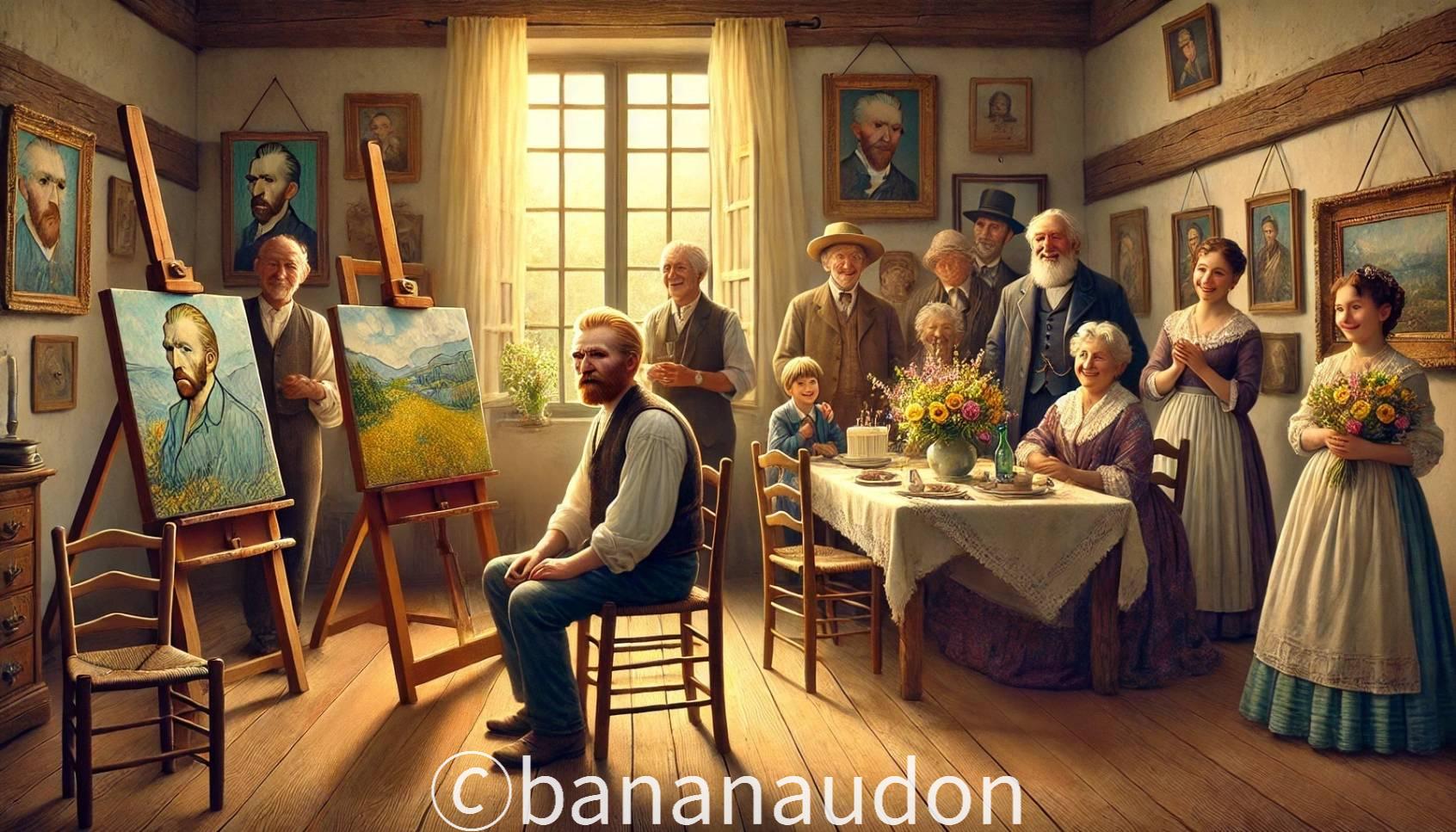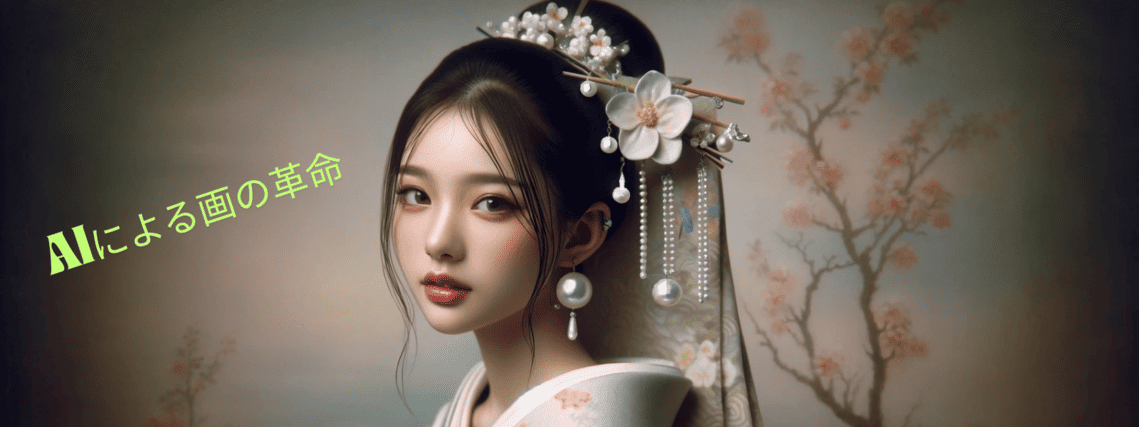Van Gogh’s Life and Masterpieces Explained | Reflecting on His Birthday, March 30
2025.03.30投稿
広告

- “I want to get a quick overview of Van Gogh’s life.”
- “I’d like a deeper understanding of the background behind masterpieces like ‘Sunflowers’ and ‘The Starry Night’.”
- “I’m curious how his relationship with his brother Theo influenced his artwork.”
Do any of these questions resonate with you?
March 30 is Van Gogh’s birthday, making it a fitting occasion to revisit his life and work.
You might discover new depths to his artistic vision.
To get straight to the point, Van Gogh was a painter who produced numerous masterpieces in a mere decade of artistic activity, later achieving global acclaim after his death.
- His early interest in painting, evident from childhood
- The turbulent periods in Arles and Saint-Rémy
- The profound bond with his brother Theo that sustained his work
By focusing on these points, your perspective when viewing his paintings may shift dramatically.
▼Topics covered in this article
- The environment surrounding his March 30 birth and childhood
- A four-period timeline of Van Gogh’s life
- Color expression in his masterpieces and the acclaim that followed his death
- The role of brother Theo’s support in advancing Van Gogh’s art
- The appeal of an original painting titled “Van Gogh’s Birthday Party”
By the end of this article, you’ll have a deeper understanding of Van Gogh’s unique journey and his artworks.
Whether you’re exploring new angles on his masterpieces or seeking gift ideas and items to collect, you’ll find many ways to appreciate his art.
Please stay with us until the end.
Van Gogh’s Birth (March 30) and Early Environment
Van Gogh was born on March 30, 1853, experiencing diverse stimuli during his childhood with the help of his family.
The artistic sensibility that profoundly shaped his later years is said to have gradually taken root at this early stage.
That upbringing helped spark a significant surge in his creative drive.
Born in 1853 and His Family Background
Van Gogh was born in Zundert, in the Netherlands. His father was a pastor and his mother was deeply fond of art.
The family held strong religious values, and young Van Gogh is said to have developed a worldview informed by his faith.
They were dedicated to education, and his brother Theo, among other siblings, was a source of stimulation.
Though not financially well-off, his parents recognized his interest in books and painting materials and supported him as best they could.
This environment offered both spiritual guidance and artistic understanding, laying a foundation for the emotional depth later evident in his work.
In particular, it’s said that his mother’s influence fostered an early appreciation for nature and plant life.
Early Fascination with Painting
During childhood, Van Gogh was exposed to his father’s pastoral duties and the family’s religious outlook while developing a keen interest in the countryside and rural landscapes around him.
Through sketching and copying, he discovered an early joy in self-expression.
Initially seen by adults as mere curiosity, his talent soon became evident. With financial resources limited, they still provided him with sketchbooks and art supplies where possible.
Thanks to that support, he never lost the passion for drawing what stirred his imagination.
These small efforts ultimately nurtured the observational skills and emotional intensity that shaped his later style.
A Look at Van Gogh’s Life in Four Periods
Despite an artistic career spanning roughly a decade, Van Gogh’s development is often categorized into four stages.
Each phase brought environmental changes that radically influenced his color choices and painting techniques.
Here, we examine his time in the Netherlands, Paris, Arles, and Saint-Rémy.
Dutch Period: Depicting Laborers and Farmers in Dark Tones
During his earliest years of serious painting, Van Gogh’s art was characterized by somber hues and direct brushwork.
He frequently painted rural life and laborers; “The Potato Eaters” (1885) stands out as a prime example.
The colors remained subdued, reflecting his earnest perspective and social awareness.
At the time, limited financial backing also restricted his access to certain materials.
This period was still crucial for honing his observational powers.
The contrast with his later, more vibrant works is made even clearer when compared to these early earthy tones.
Paris Period: Encountering Impressionism and a Revolution in Color
In 1886, Van Gogh moved to Paris, prompting a significant transformation in his style.
He was introduced to Impressionist painters through Theo, shifting from a heavier palette to a lighter, brighter one.
He expanded his subject matter to cityscapes and café scenes, aided by better access to painting supplies and financial support.
Series depicting Montmartre’s surroundings capture the urban vibrancy of the time in a dynamic form.
This newly acquired bold brushwork and vivid coloration would later explode into a creative surge during his Arles period.
Arles Period: Sunshine and Life with Gauguin
In 1888, Van Gogh relocated to sunny Arles in southern France, energized by its radiant light and intense palette.
His output in this period was prolific, exemplified by striking images like “Sunflowers”.
However, living with Gauguin proved challenging, culminating in a violent argument that led Van Gogh to cut off his own ear.
Despite growing mental instability, he continued painting relentlessly, pushing color and brushwork even further.
Arles was a place of both artistic heights and peril.
The distinct color sense he developed there remains evident in his subsequent works.
Saint-Rémy Period: Life in a Sanatorium and a Unique Brush Style
Following the incident in Arles, Van Gogh entered a sanatorium in Saint-Rémy in 1889, seeking stability while continuing to paint.
“The Starry Night” is a defining masterpiece of this period.
The swirling night sky is said to mirror his internal turmoil.
Nevertheless, he remained captivated by the clinic’s garden and natural surroundings.
Though struggling with poor health, he pressed on with artistic experiments, deepening his unique vision through ever more creative compositions and color contrasts.
The emotional weight accumulated during this time is believed to be strongly embedded within his canvases.
Van Gogh’s Masterpieces and Their Appeal
In his short life, Van Gogh produced numerous iconic works, and his bold color choices and brushwork shocked the art world.
This section explores his distinct universe through some of his most famous pieces.
The Unique Expression in “Sunflowers,” “The Starry Night,” and More
“Sunflowers” is often cited as one of Van Gogh’s hallmark paintings.
The confident use of yellow and the sense that the flowers themselves are glowing left viewers in awe.
“The Starry Night” similarly introduced swirling, wave-like lines in the sky, challenging existing norms.
Rather than merely depicting the subjects, these pieces convey the painter’s internal feelings and energy through color. His brushstrokes are vigorous, while the contrast between light and shadow is dramatically emphasized, creating immediate visual impact. This is more than technique; it allows us to experience the raw intensity of his passionate spirit.
Posthumous Rise in Reputation and the Value of His Works
It’s well known that Van Gogh didn’t earn widespread recognition during his lifetime.
Yet not long after his death, the innovative nature of his brushwork and expression gained renewed appreciation, and international demand for his paintings soared.
“Portrait of Dr. Gachet” fetched a record price at auction, and “The Langlois Bridge at Arles” also became a star attraction in museums.
Fueling this rise were his role as a pioneer who reshaped modern painting and the competitive drive among collectors.
Additionally, certain Japanese collectors actively sought out his work, driving prices higher.
Through these factors, Van Gogh’s paintings now command some of the highest values in the global art market.
Van Gogh and His Brother Theo
The presence of his younger brother Theo significantly influenced Van Gogh’s life and artwork.
Their bond went beyond simple financial support, evolving into a partnership of true artistic understanding.
Brotherly Devotion Revealed Through Letters
Van Gogh and Theo exchanged numerous letters, many of which survive to this day.
They candidly discussed not just money and artistic progress but also mental struggles and future worries.
One letter famously reads, “Without your help, I might not be able to hold a paintbrush,” illustrating how financial support directly enabled his work.
For his part, Theo never ceased believing in Van Gogh’s talent, feeling it would profoundly shape the art world.
These letters are invaluable not only for revealing their personal thoughts but also for providing firsthand insight into Van Gogh’s mental landscape.
This honest communication forged a relationship that transcended typical family ties and became a deeply supportive partnership.
Theo’s Wife Jo and Her Role in Promoting Van Gogh’s Artwork
After Van Gogh’s passing, Theo’s wife Jo played a vital role in preserving and publicizing his art.
Tragically, Theo died only six months after Van Gogh, so the work of bringing Van Gogh’s legacy to the world fell to Jo.
By carefully organizing the letters and artworks, then actively reaching out to art dealers and exhibitions, she helped amplify Van Gogh’s public profile.
Public appreciation of his art was still lacking, so gaining recognition wasn’t easy.
Yet Jo’s persistent efforts led museums and collectors worldwide to welcome Van Gogh’s work, eventually establishing him as a modern art icon.
Without her determined actions, Van Gogh might not be the household name he is today.
A Painting Entitled “Van Gogh’s Birthday Party”
This time, an artist drew inspiration from Van Gogh’s birthdate, March 30, creating a piece called “Van Gogh’s Birthday Party.” Employing vivid colors and an unconventional composition, the work pays homage to Van Gogh’s aesthetic while offering a fresh artistic approach.
Concept and Scene Depicted
The painting explores a hypothetical celebration of Van Gogh’s birthday, had he been alive.
The table is adorned with sunflowers, along with the paints and brushes Van Gogh reportedly used, set against a backdrop echoing the bright scenery of Arles in southern France. The artist chose soft brushstrokes and lively colors, reflecting both personal experiences and reverence for Van Gogh’s life.
Van Gogh himself isn’t explicitly shown, leaving room for viewers’ imaginations. This design choice allows audiences to sense his presence, making him feel closer and more alive in the space.
The selected hues—particularly yellow and blue—reflect Van Gogh’s favorites, merging the source material’s spirit with the creator’s personal vision for a singular artistic result.
Depicting the People Around Van Gogh and the Uniqueness of the Space
In the center, we see figures raising glasses in celebration and chatting animatedly.
Their arrangement evokes Van Gogh’s distinctive approach to perspective, drawing attention to their actions and expressions.
The background includes warm-toned lighting reminiscent of the Arles café terraces, along with elements hinting at the Saint-Rémy asylum, symbolically weaving together the path Van Gogh followed.
A subtle swirl alluding to “The Starry Night” appears, giving the scene a fantastical atmosphere, as if the air itself is in motion.
References to Van Gogh’s beloved motifs—cypresses, wheat fields, and more—are scattered throughout, offering new discoveries with each viewing.
By embedding these elements, the artist reflects Van Gogh’s era and inner world in the party setting, immersing observers as though they’ve joined the celebration firsthand.
Conclusion
Throughout his brief artistic career, Van Gogh created a substantial body of work, imbued with the intense emotional struggles and profound brotherly bond shared with Theo.
Taking a moment on March 30—Van Gogh’s birthday—to revisit his life and creations can reveal the passion and sharp observational skills poured into every brushstroke.
Moreover, “Van Gogh’s Birthday Party,” an original piece inspired by that date, shows how contemporary artists draw fresh inspiration from Van Gogh’s legacy.
Numerous museums and research institutions worldwide continue to rediscover the brilliance of his work, carrying out extensive exhibitions and studies. His posthumous impact is immeasurable; as new perspectives and findings emerge, Van Gogh’s story continues to captivate us all.
